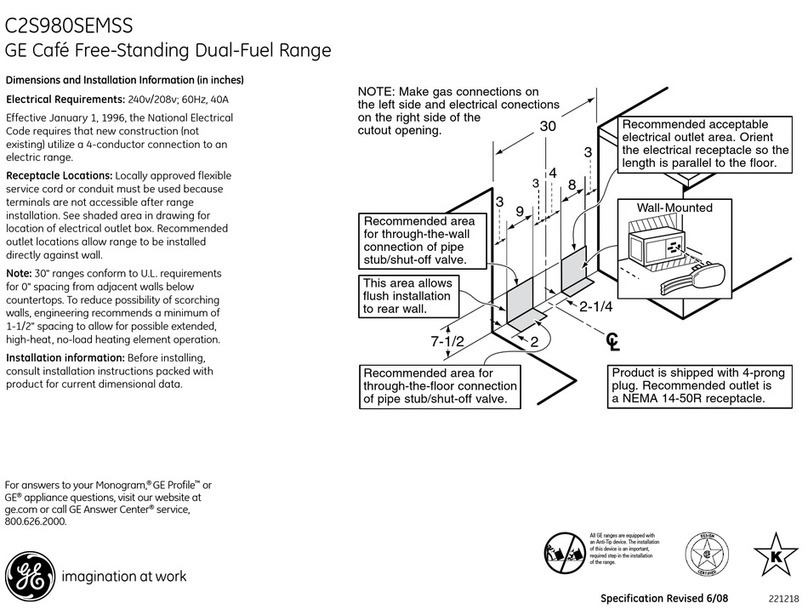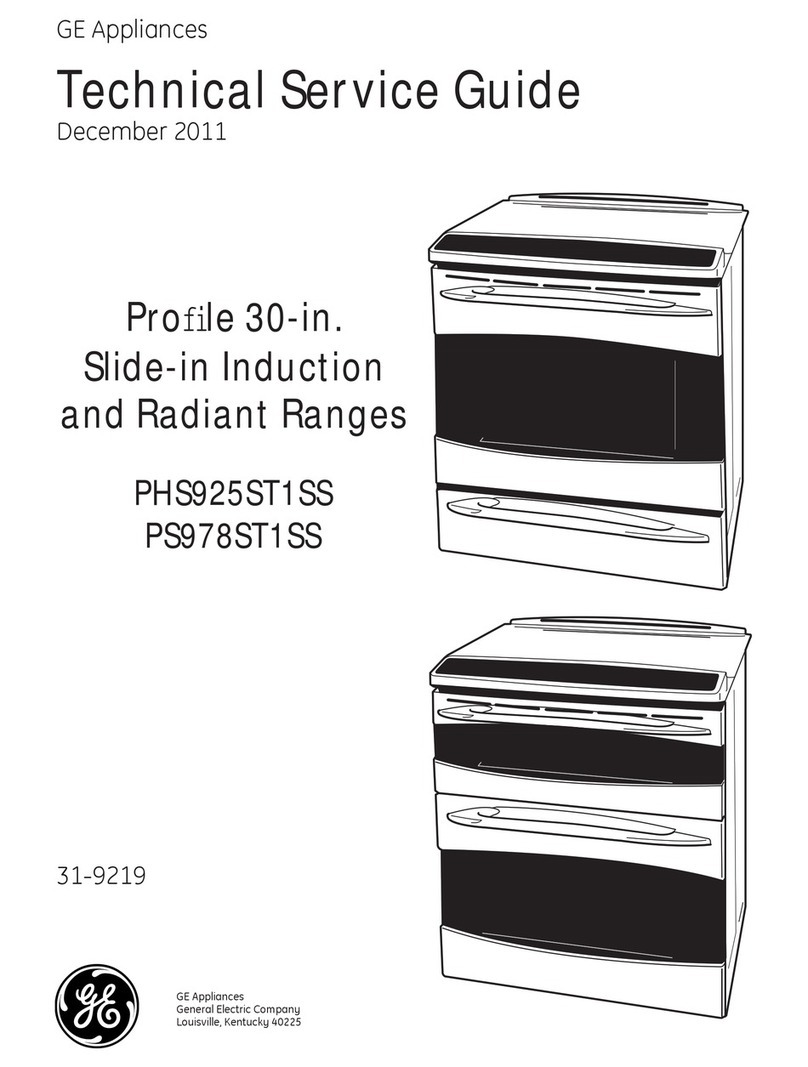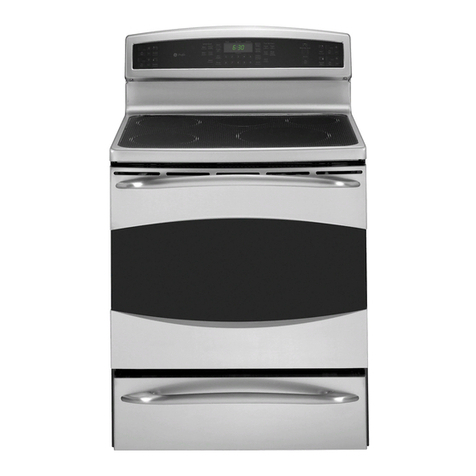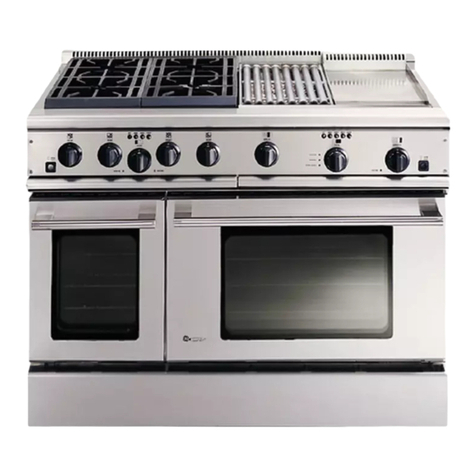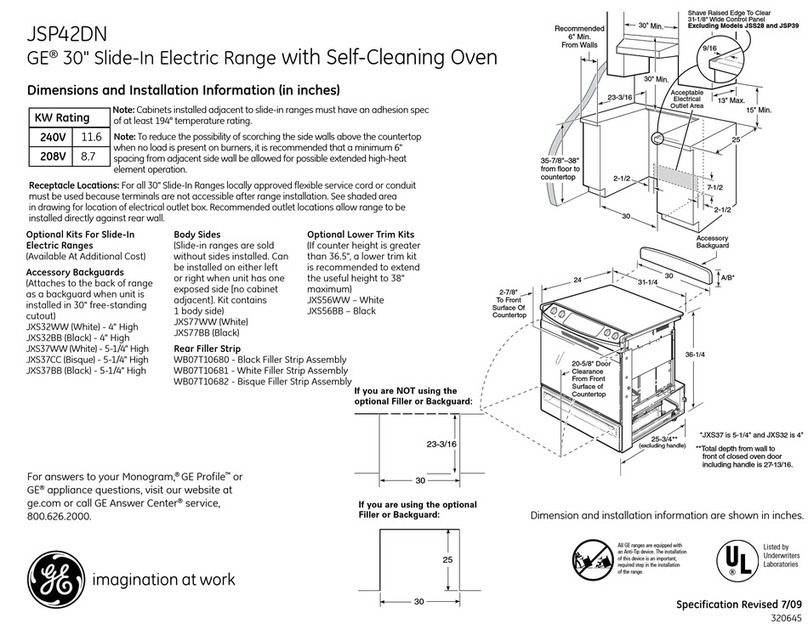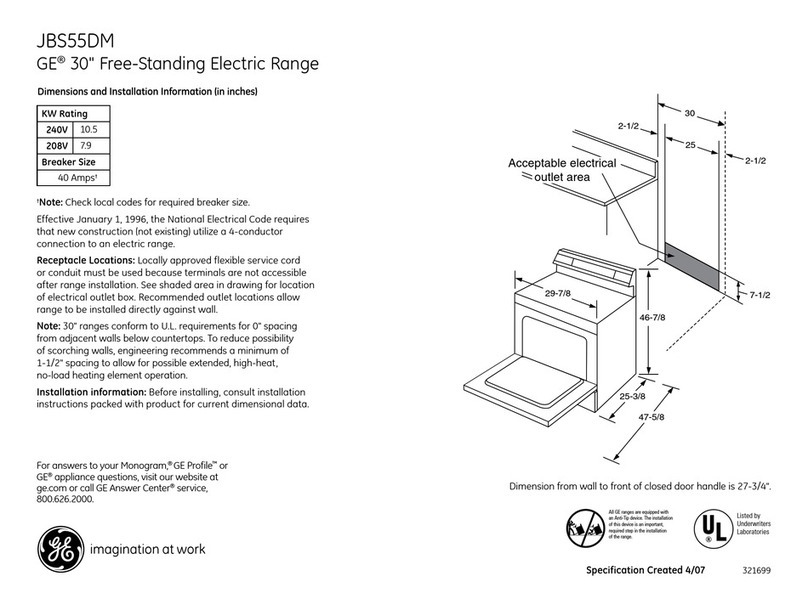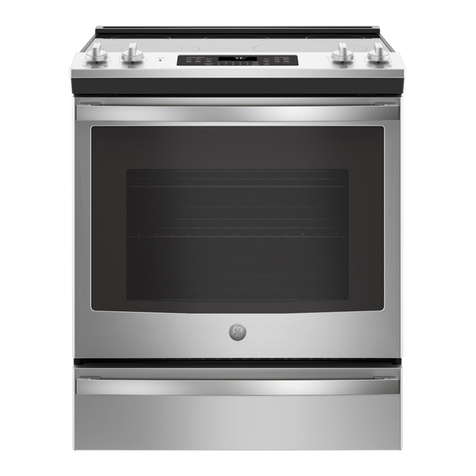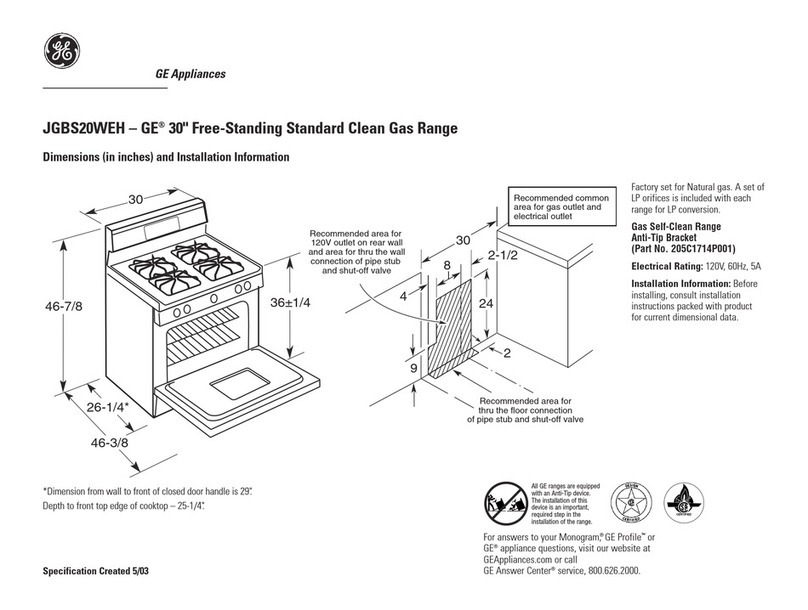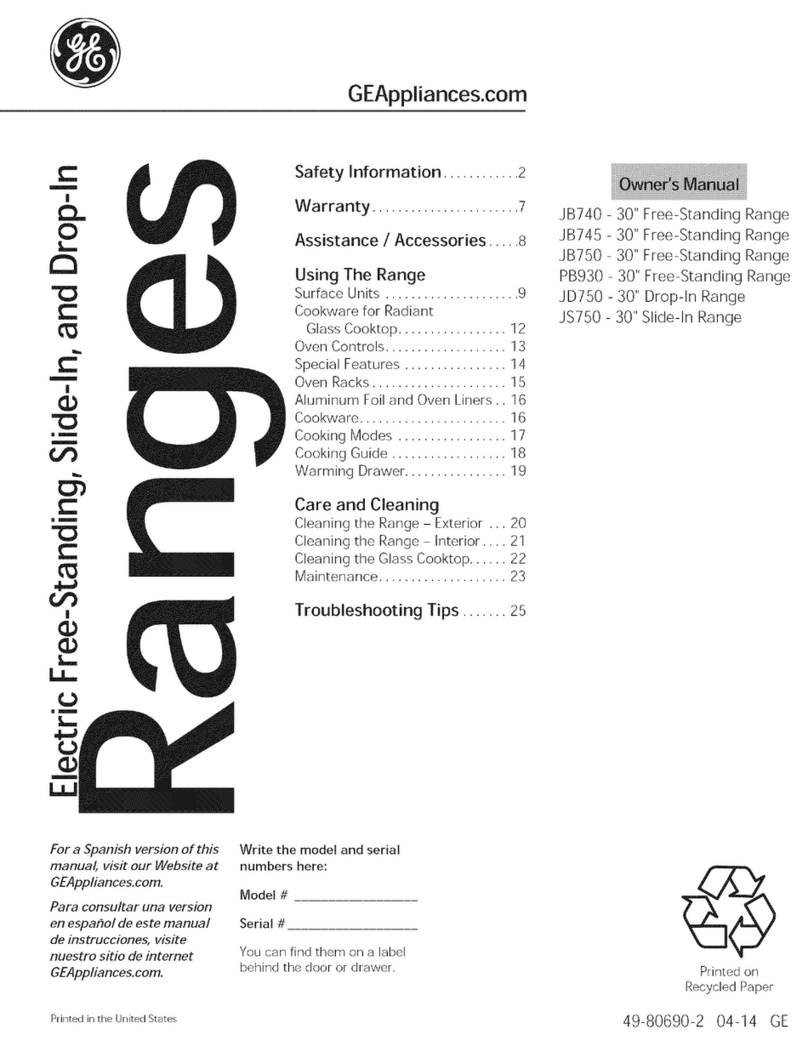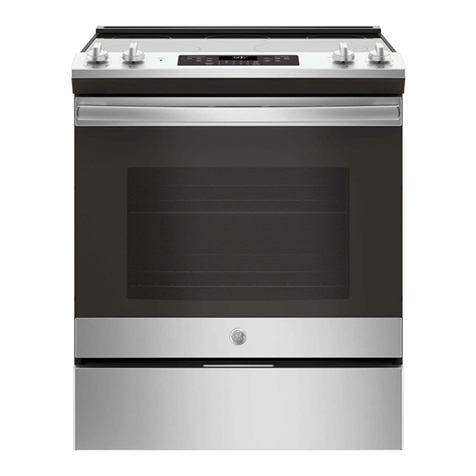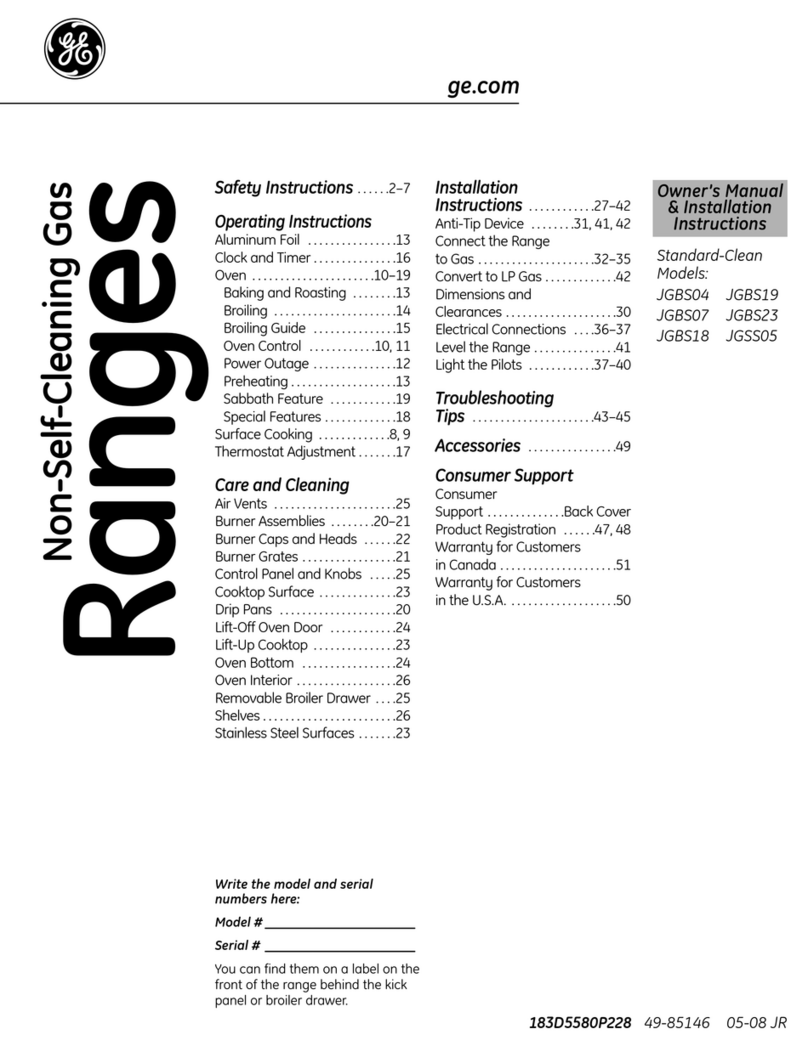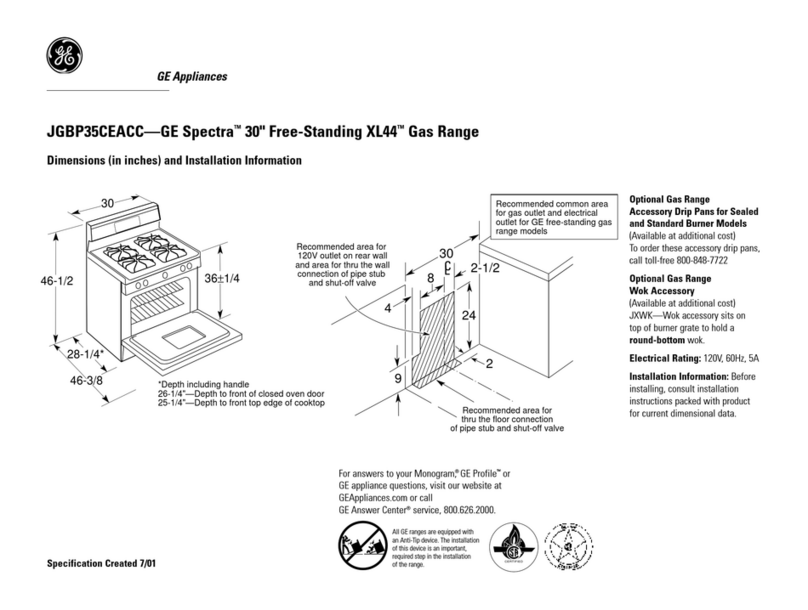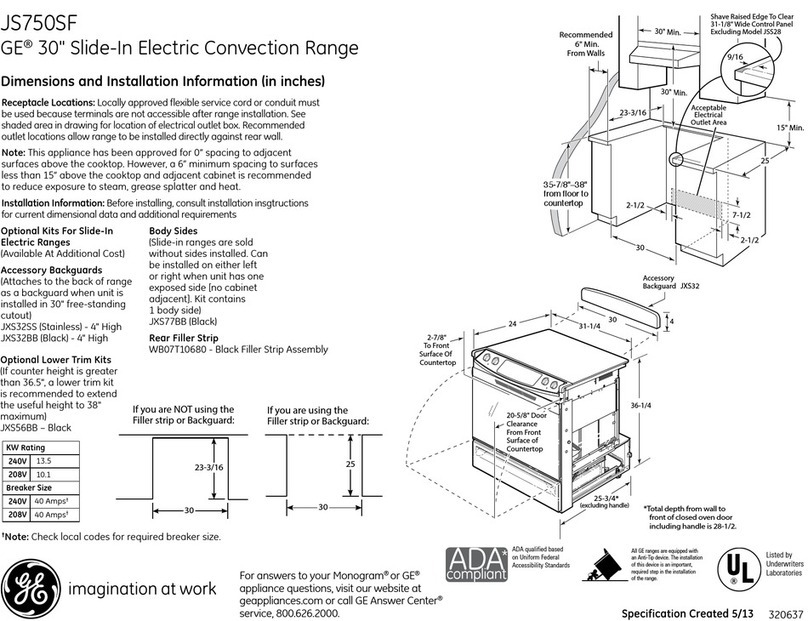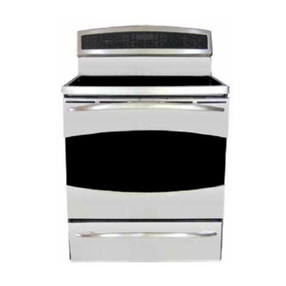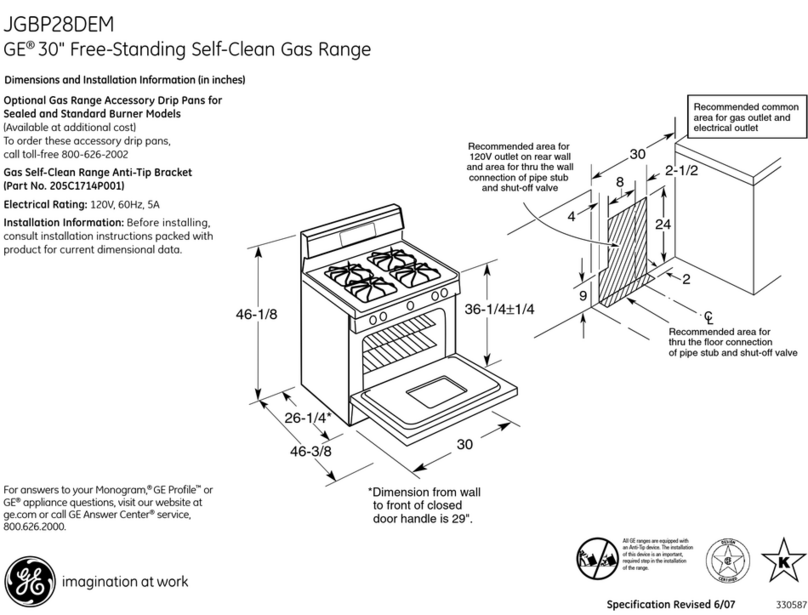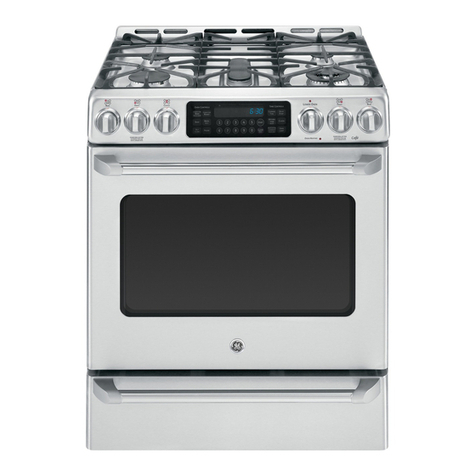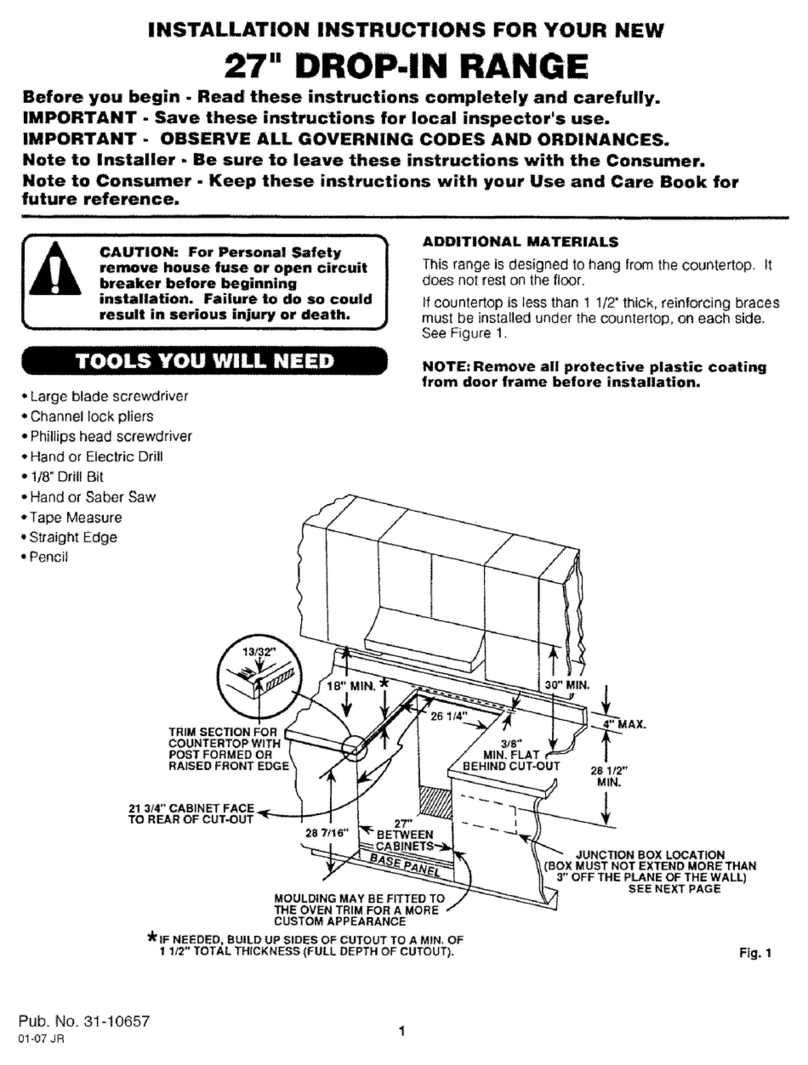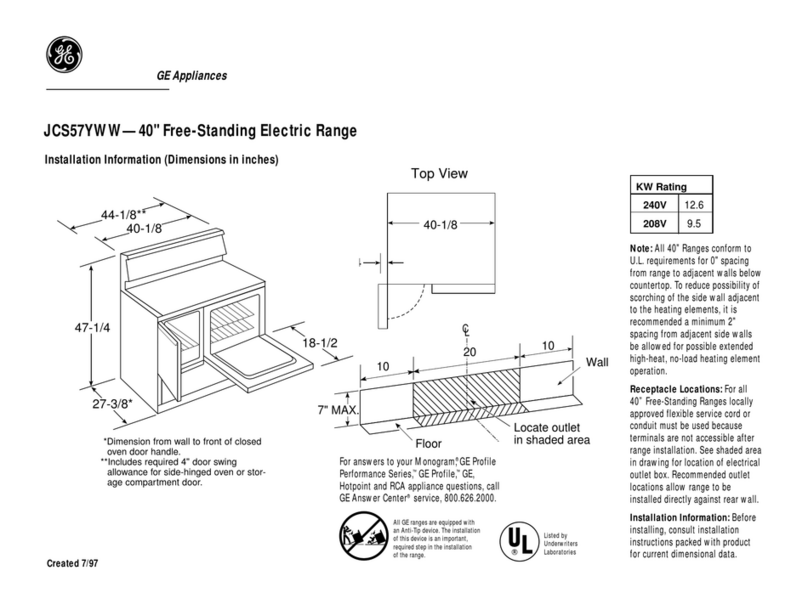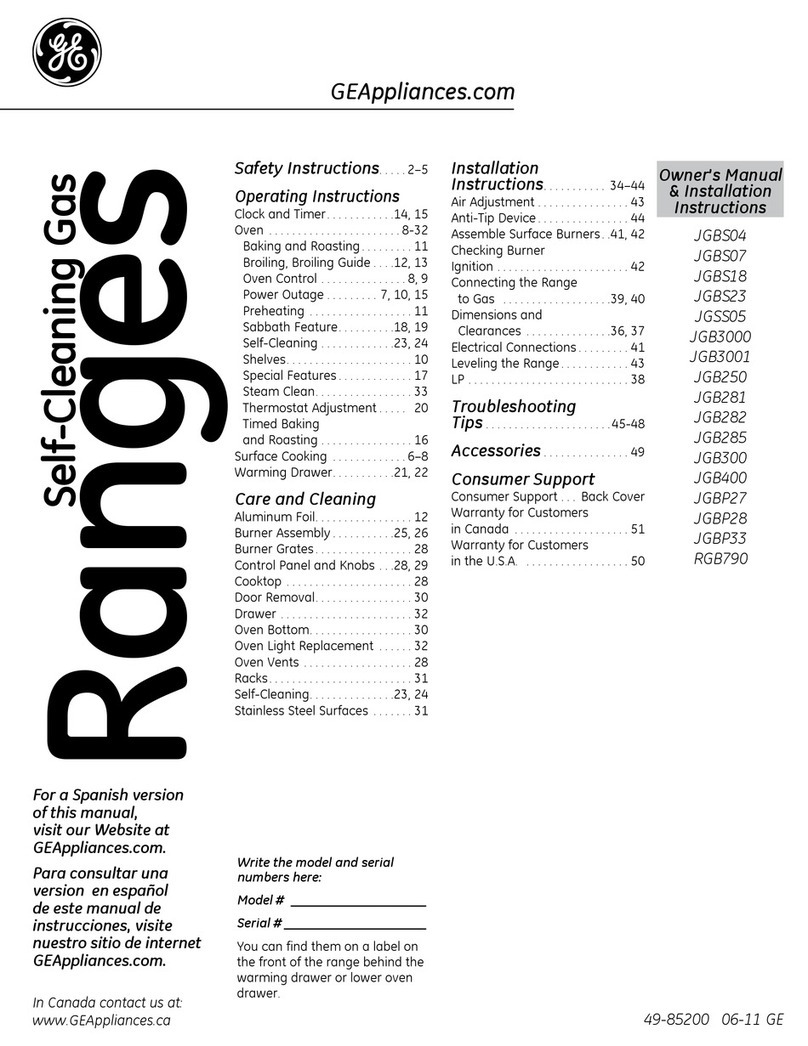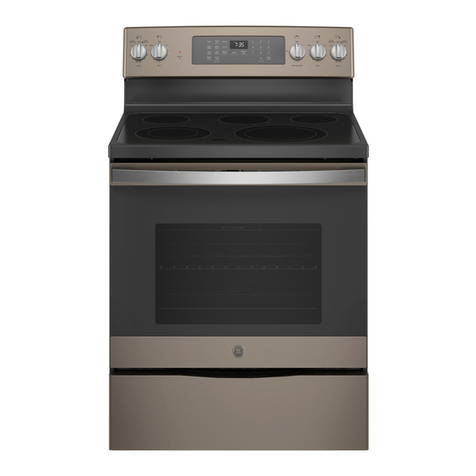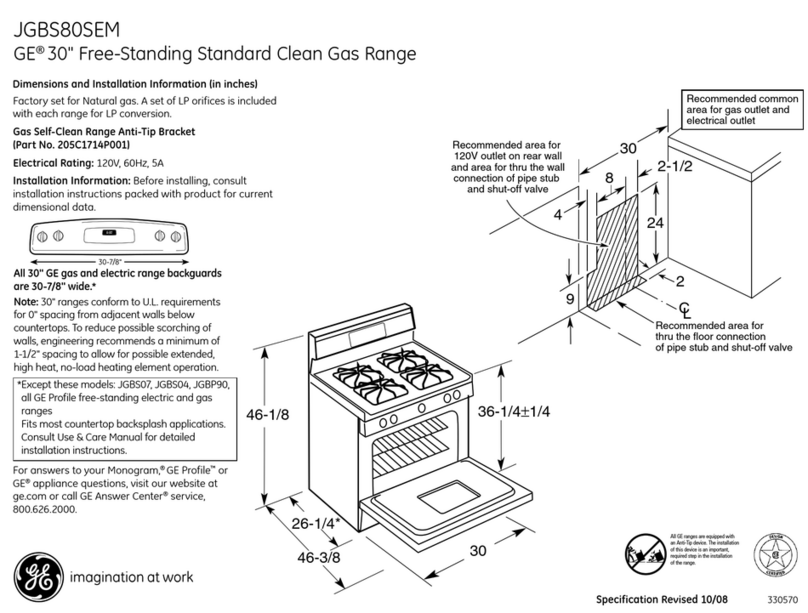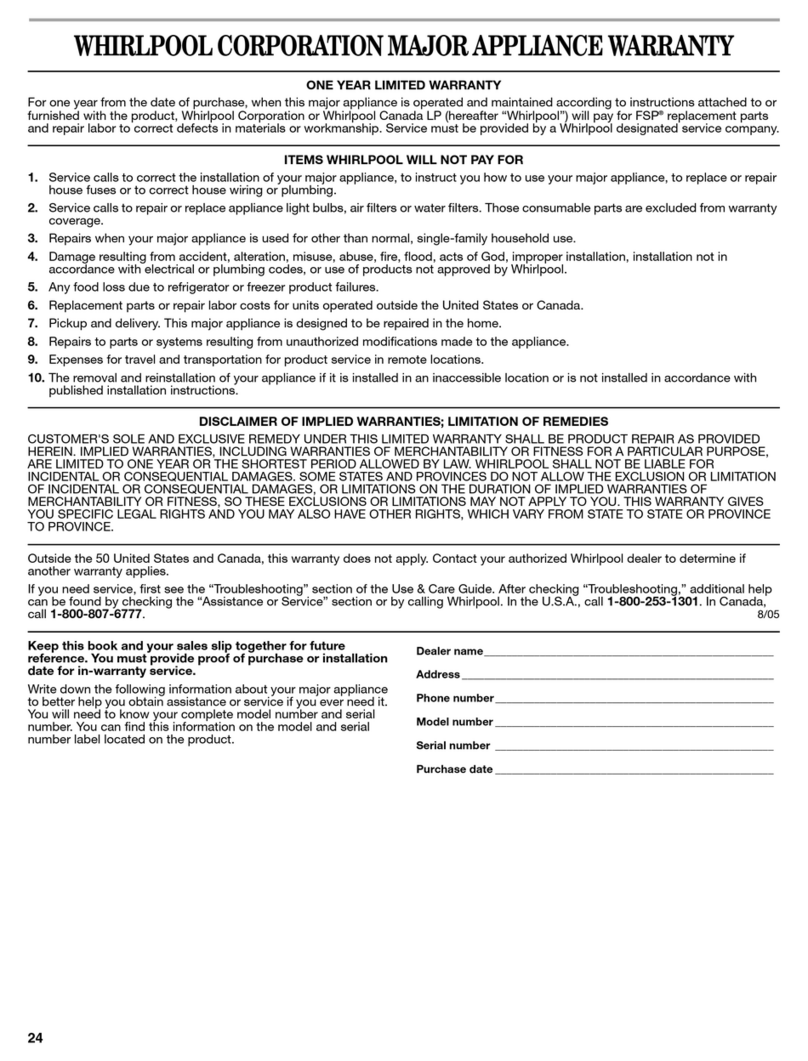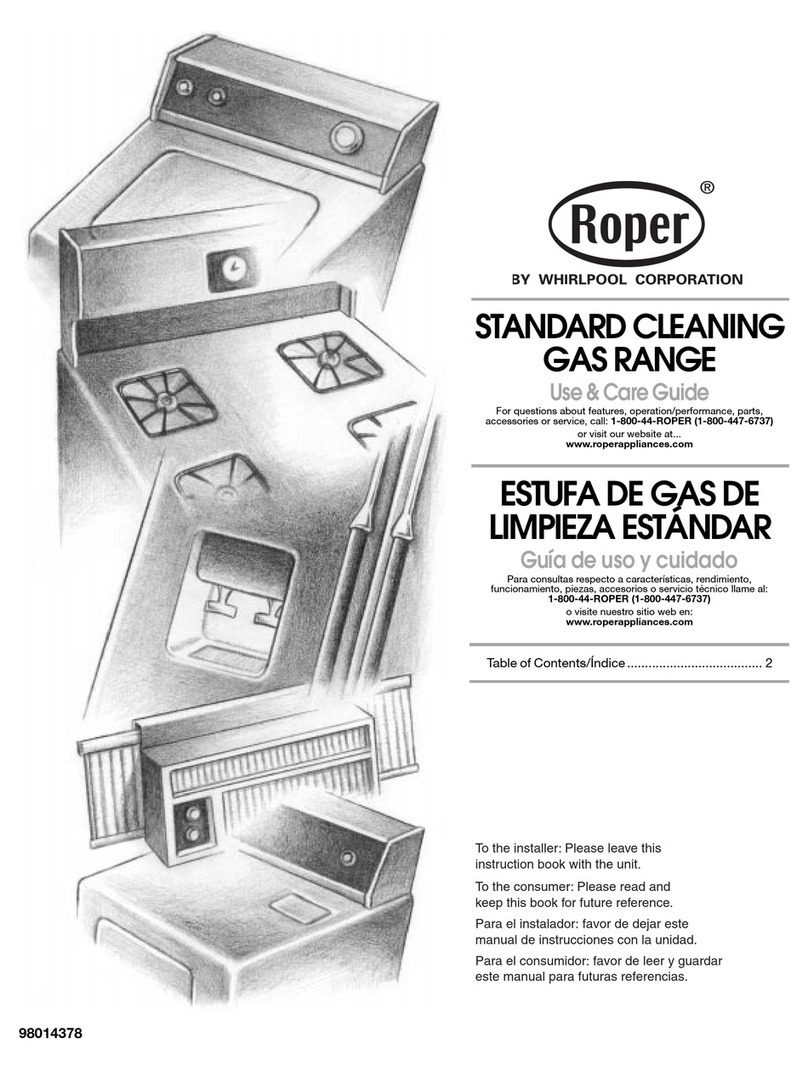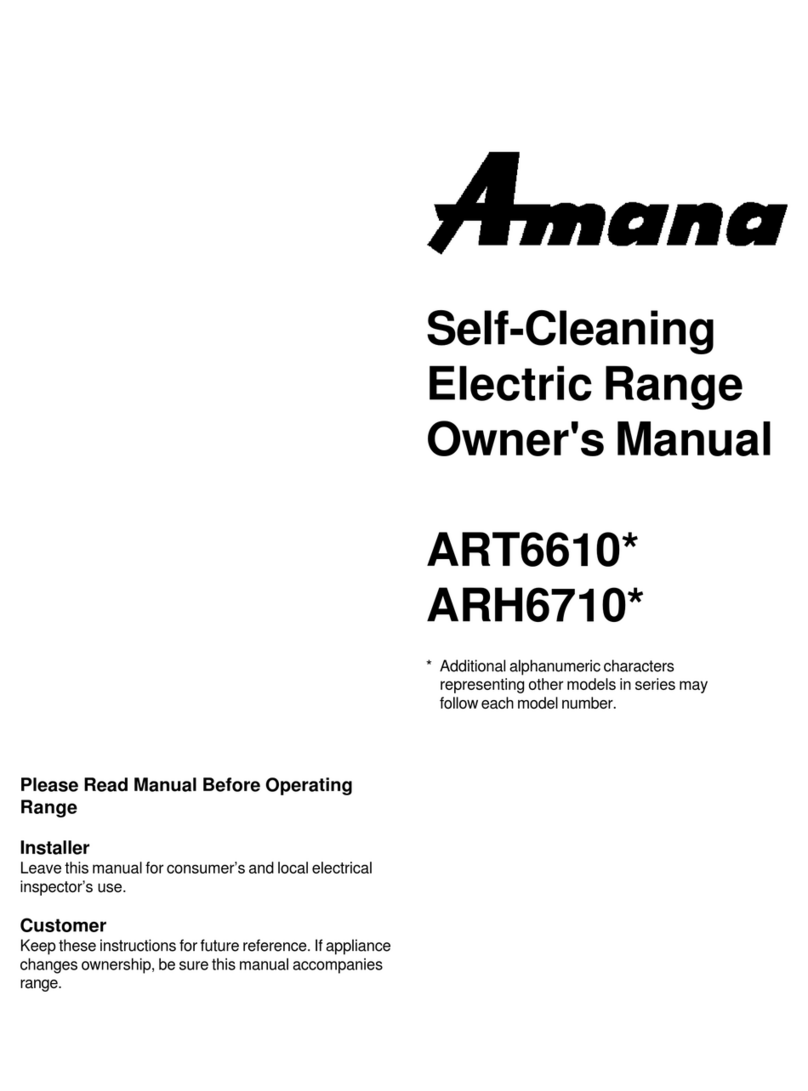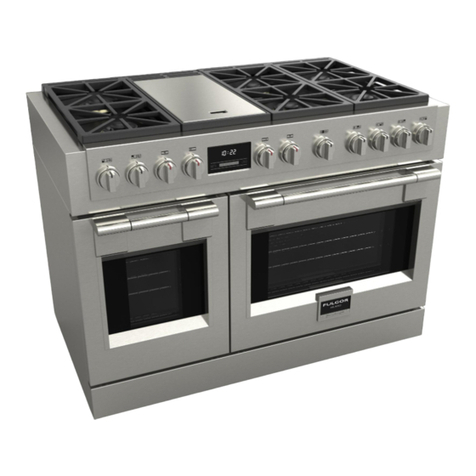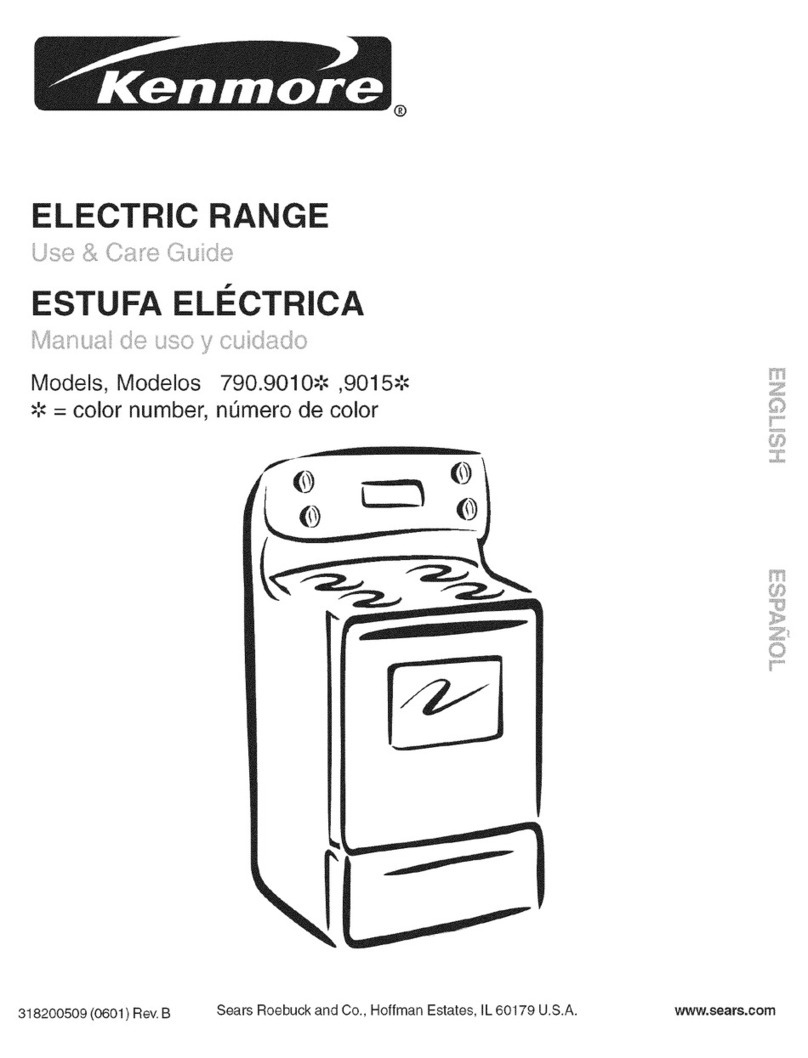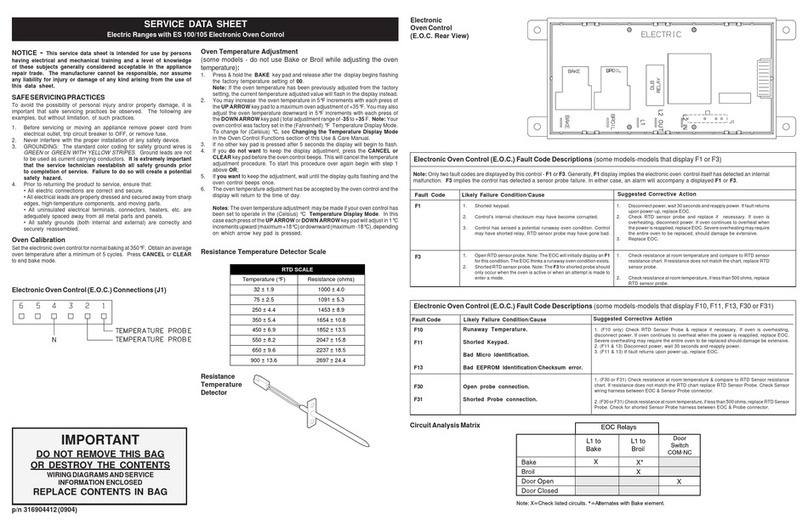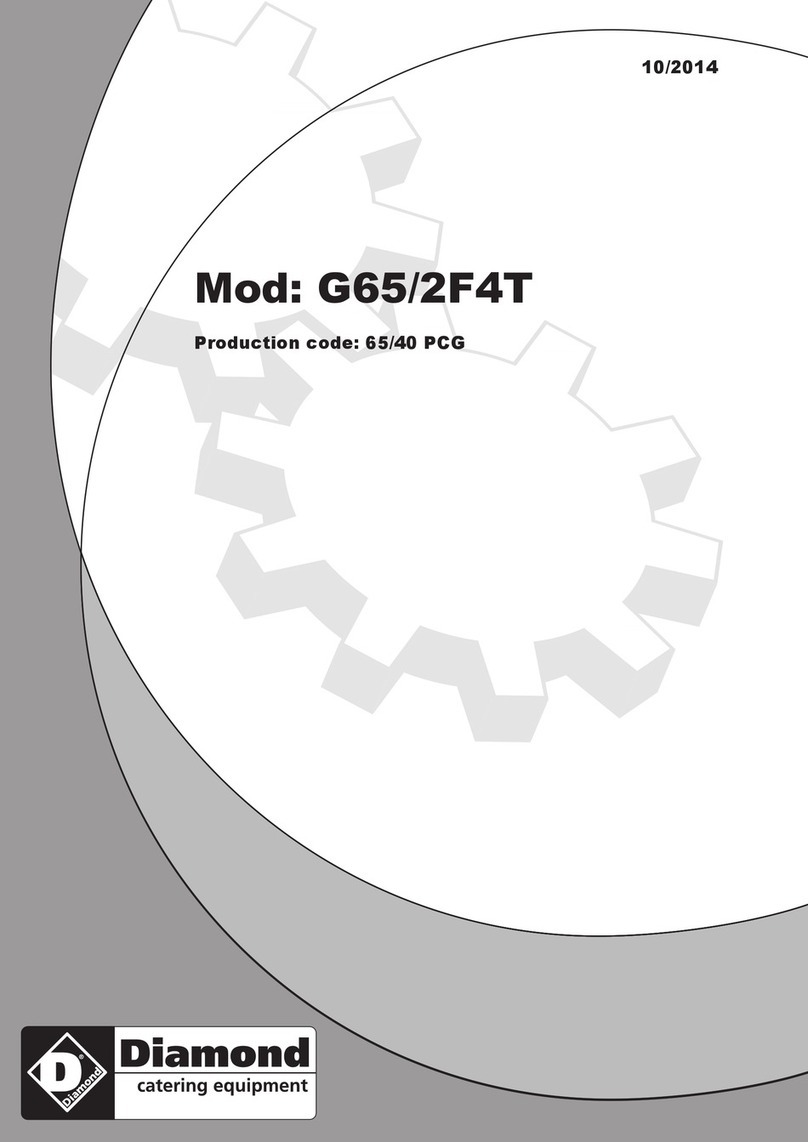Questions & Answers
Q. May I can foods and
preserves on my surface units?
A. Yes, but only use cookware
designed for canning purposes.
Check the manufacturer’s
instructions and recipes for
preserving foods. Be sure canner is
flat-bottomed and fits over the
center of the surface unit. Since
canning generates large amounts of
steam, be careful to avoid burns
from steam or heat. Canning should
only be done on surface units.
Q. Can I cover my drip pans
with foil?
A. No. Clean as recommended in
Cleaning Guide.
Q. Can I use special cooking
equipment, like an oriental wok,
on any surface unit?
A. Cookware without flat surfaces
is not recommended. The life of
the surface units can be shortened
and the range top can be damaged
from the high heat needed for this
type of cooking.
Q. Why am I not getting the heat
I need from my surface units
even though I have the knobs on
the right setting?
A. After turning surface units off
and making sure they are cool,
check to make sure that your
plug-
in units are securely fastened into
the surface connection.
Q.
Why
does my cookware tilt
when I place it on the surface unit?
A. Because the surface unit is not
flat. Make sure that the “feet” on
your surface units are sitting
tightly in the range top indentation
and the drip pan is flat on the range
surface.
Q. Why is the porcelain finish on
my cookware coming off?
A. If you set your surface unit
higher than required for the
cookware material, and let the
cookware sit too long, the
cookware’s finish may smoke,
crack, pop or burn, depending on
the pot or pan. Also, cooking small
amounts of dry food may damage
the cookware’s finish.
Home Canning Tips
Canning should be done on
surface units only.
In surface cooking, the use of pots
extending more than one inch
beyond the edge of the surface
unit’s drip pan is not recommended.
However, when canning with a
water-bath or pressure canner,
large-diameter pots may be used.
This is because boiling water
temperatures (even under pressure)
are not harmful to cooktop surfaces
surrounding the surface units.
HOWEVER, DO NOT USE
LARGE-DIAMETER CANNERS
OR OTHER LARGE-DIAMETER
POTS FOR FRYING OR
BOILING FOODS OTHER
THAN WATER. Most syrup or
sauce mixtures—and all types of
frying+ook
at temperatures
much higher than boiling water.
Such temperatures could
eventually harm cooktop surfaces
—
surrounding surface units.
Observe Following Points
in Canning
1. Be sure the canner fits over the
center of the surface unit. If your
range or its location does not allow
the canner to be centered on the
surface unit, use smaller-diameter
pots for good canning results.
2. Flat-bottomed canners must be
used. Do not use canners with
flanged or rippled bottoms (often
found in enamelware) because they
don’t make enough contact with
the surface unit and take too long
to boil water.
RIGHT WRONG
3. When canning, use recipes and
procedures from reputable sources.
Reliable recipes and procedures
are available from the
manufacturer of your canner;
manufacturers of glass jars for
canning, such as Ball and Kerr;
and the United States Department
of Agriculture Extension Service.
4. Remember that canning is a
process that generates large
amounts of steam. To avoid burns
from steam or heat, be careful
when canning.
NOTE: If your house has low
voltage, canning may take longer
than expected, even though
directions have been carefully
followed. The process time will be
shortened by:
(1) using a pressure canner, and
(2) starting with HOT tap water for
fastest heating of large quantities
of water.
9
